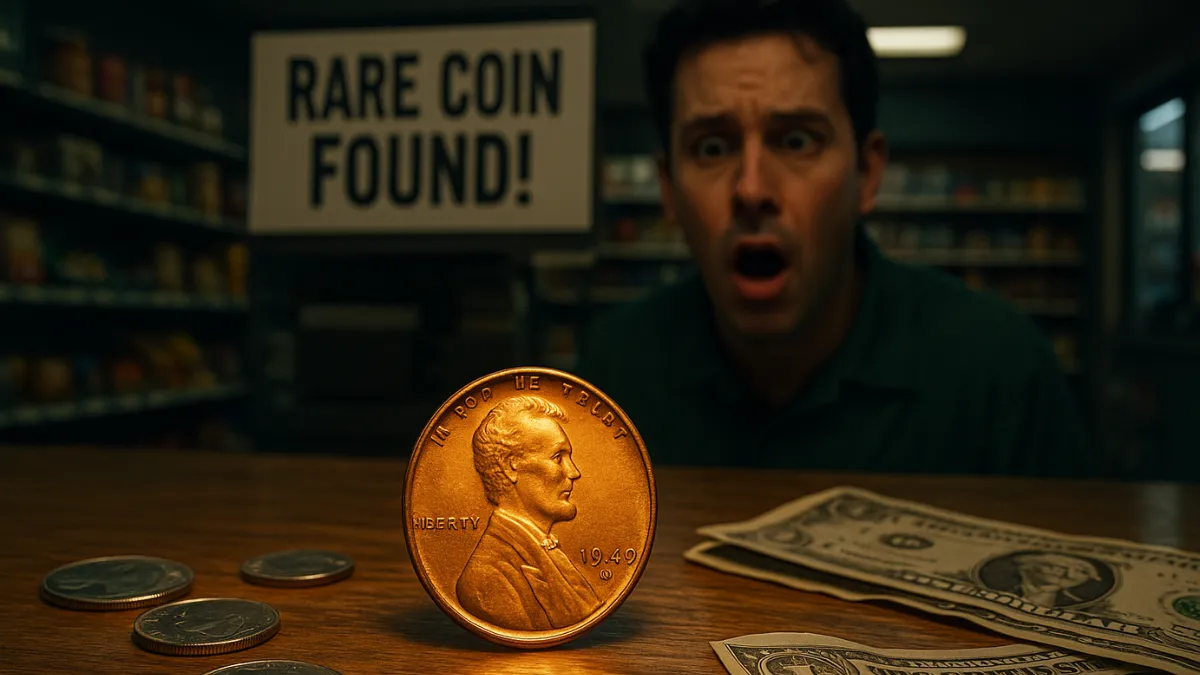Pennies often go unnoticed in our daily lives—left in jars, forgotten in drawers, or ignored on sidewalks. But among these seemingly insignificant coins could lie a fortune.
One such coin, the elusive 1943 bronze Lincoln Wheat Penny, has fetched as much as $2.1 million at auction. And according to collectors, there may still be a few undiscovered pieces circulating in the world today.
The Origin of a Numismatic Icon
The Lincoln Wheat Penny was first issued in 1909 to celebrate the 100th anniversary of Abraham Lincoln’s birth. This coin made history as the first U.S. currency to feature a real person, replacing the traditional Lady Liberty with Lincoln’s portrait.
Designed by artist Victor David Brenner, the penny showcased Lincoln’s profile on the front and a pair of wheat ears on the back—hence its nickname. This design was used until 1958, when it was replaced with an image of the Lincoln Memorial.
A Wartime Mix-Up Creates a Collector’s Dream
What makes the 1943 Lincoln Wheat Penny so special is a rare minting error. During World War II, copper was in high demand for military use, so the U.S. Mint began producing pennies from zinc-coated steel to save copper for the war effort.
However, a few leftover bronze blanks from 1942 were mistakenly used to mint some 1943 pennies. These rare coins, made of bronze but stamped with the 1943 date, are now among the most valuable coins ever produced in the U.S.
From Coin Jar to Million-Dollar Windfall
Only a few of these bronze 1943 pennies are known to exist, making them extremely valuable to collectors. One of them sold for an astounding $2.1 million at auction.
What’s even more exciting is the possibility that some of these rare coins are still out there—tucked away in forgotten coin collections, loose change, or even passed along in everyday transactions.
How to Spot a Valuable Penny
Wondering if you might be holding a fortune in your hand? Here are some quick ways to check:
- Date: Look for a 1943 mint year.
- Magnet test: Steel pennies are magnetic, but bronze ones are not.
- Color: Bronze pennies have a coppery appearance, unlike the grayish tone of steel coins.
- Weight: Bronze coins weigh around 3.11 grams; steel ones are lighter at about 2.7 grams.
If a penny meets these criteria, it’s worth getting it professionally evaluated.
Other Wheat Pennies with High Value
The 1943 bronze penny isn’t the only Lincoln Wheat Penny with serious value. Here are a few more to watch for:
- 1909-S VDB: This early version, made in San Francisco and bearing the designer’s initials, can be worth over $100,000 in pristine condition.
- 1944 Steel Penny: Another accidental rarity, created when steel blanks were mistakenly used after the Mint switched back to bronze.
- 1955 Doubled Die: Known for its noticeable doubled lettering, this error coin can sell for thousands.
What to Do If You Find One
If you think you’ve found a rare penny, handle it carefully. Never clean the coin, as this can damage it and decrease its value.
Use a magnet to confirm whether it’s bronze or steel, and then consider submitting it for authentication through services like PCGS (Professional Coin Grading Service) or NGC (Numismatic Guaranty Corporation). These experts can confirm authenticity and assign a value, essential for resale or auction.
The Excitement of the Hunt
Part of what makes the Lincoln Wheat Penny so captivating is the possibility of finding treasure in the most ordinary of places. Anyone with a handful of change has a chance to uncover something extraordinary.
It’s a reminder that sometimes, life-changing opportunities come in the smallest packages—and may be hiding in plain sight.
FAQs
How can I tell if my 1943 penny is the rare bronze version?
Check the color first—bronze pennies have a coppery appearance, while steel ones look silvery. Use a magnet next: if the penny sticks, it’s steel; if not, it may be bronze. You can also weigh it—bronze pennies weigh about 3.11 grams, while steel ones weigh around 2.7 grams.
Why is the 1943 bronze Lincoln Wheat Penny so valuable?
It’s valuable because it was a minting mistake. During WWII, the U.S. switched to steel pennies to conserve copper. A few bronze blanks from 1942 were accidentally used in 1943, making these coins extremely rare and highly sought after by collectors.
What should I do if I think I’ve found a rare penny?
Handle it carefully and avoid cleaning it. Use basic tests like color, weight, and magnetism, then have the coin professionally authenticated by a reputable grading service like PCGS or NGC to confirm its identity and value.
Are there other Lincoln Wheat Pennies that are valuable?
Yes! In addition to the 1943 bronze penny, valuable varieties include the 1909-S VDB, the 1944 steel penny, and the 1955 Doubled Die penny. All are rare and can be worth thousands—or even more—in excellent condition.
